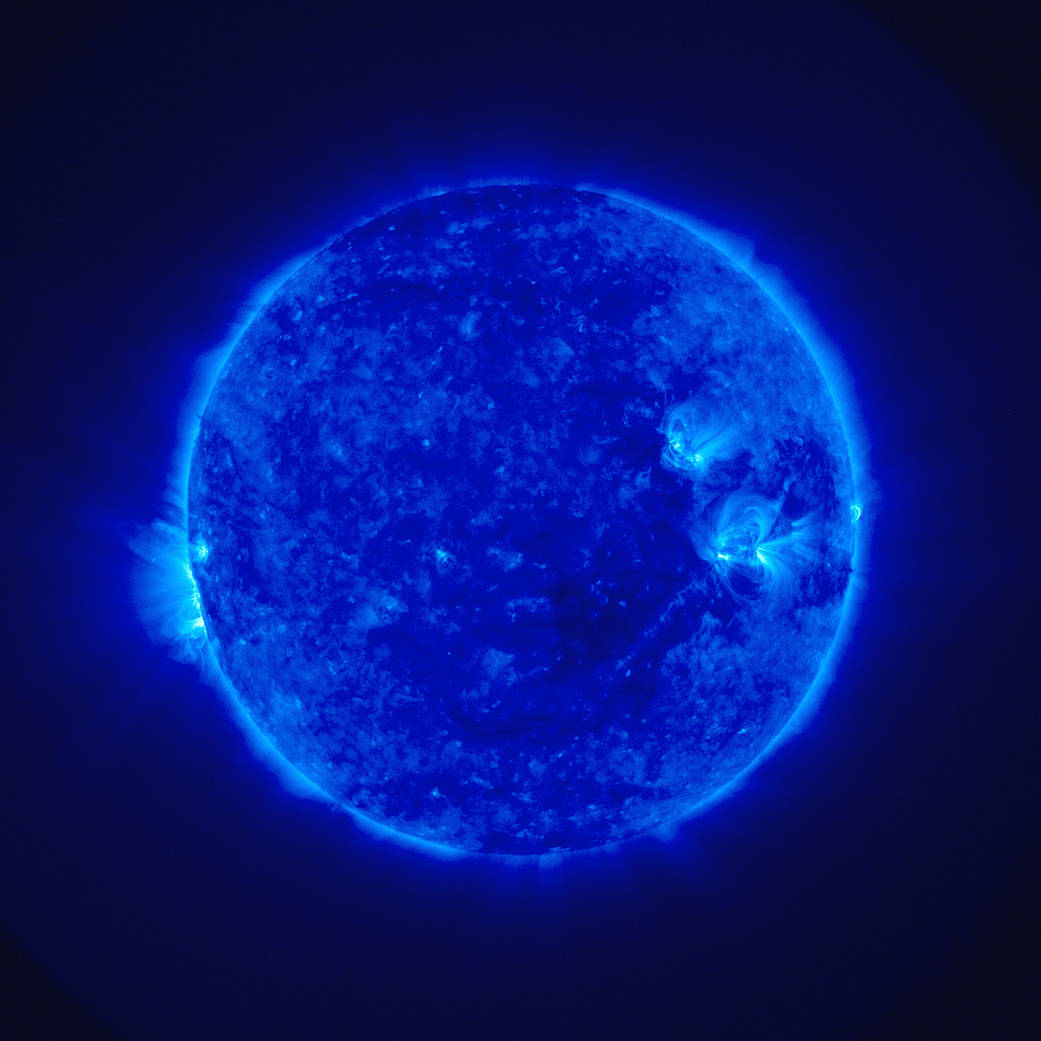Loops of highly charged particles burst from the sun’s surface in this image, taken on Dec. 4, 2006. Among the first images taken by STEREO, the image shows the sun’s roiling surface and atmosphere at temperatures around one million Kelvin (1.8 million degrees Fahrenheit).
The charged particles, mostly extremely hot protons and electrons, create a strong magnetic field that pulls the particles into the loops seen here. Over time, magnetic stress builds in the sun’s atmosphere until the energy is released in a massive explosion. The explosion sends a giant cloud of charged particles (a coronal mass ejection) and x-ray solar flares hurtling into space with a force comparable to a billion megaton nuclear bombs. When the charged particles and x-rays bombard the Earth, they can disrupt communications and power systems and are a threat to satellites and astronauts in space.
Understanding the difference between harmful and harmless coronal mass ejections is one of the biggest questions that scientists studying the face of the sun. Currently, scientists only see ejections in one dimension. To understand how solar storms travel through the solar systems, scientists need a three-dimensional view of the storms.
STEREO, launched on Oct. 25, 2006, consists of observation systems orbiting the sun in front of and behind the Earth. Just as our two eyes give us a three-dimensional view of the world, the views provided by each STEREO system can be combined to provide a three-dimensional view of the sun. Though the first STEREO images were taken in early December, the two systems won’t be in position to give three dimensional images until April 2007.Image credit: NASA
2 min read



























